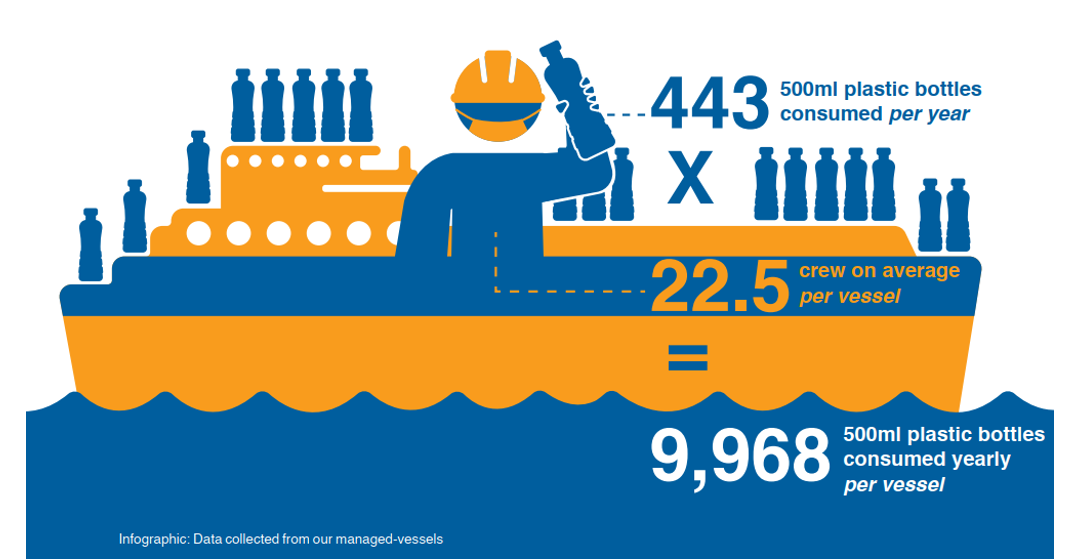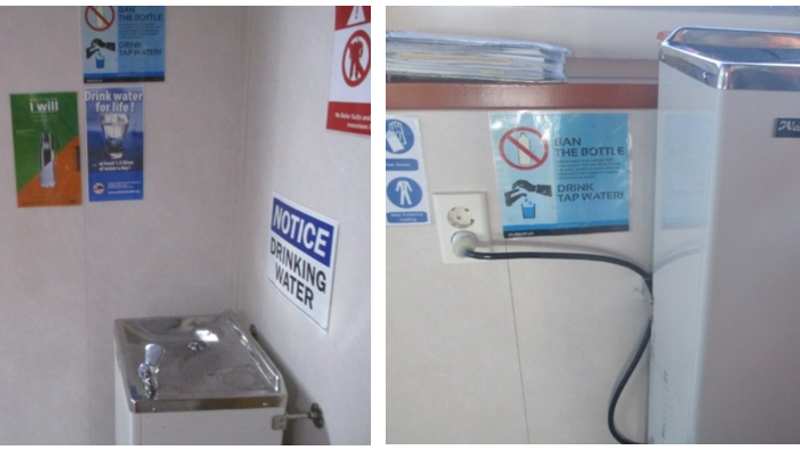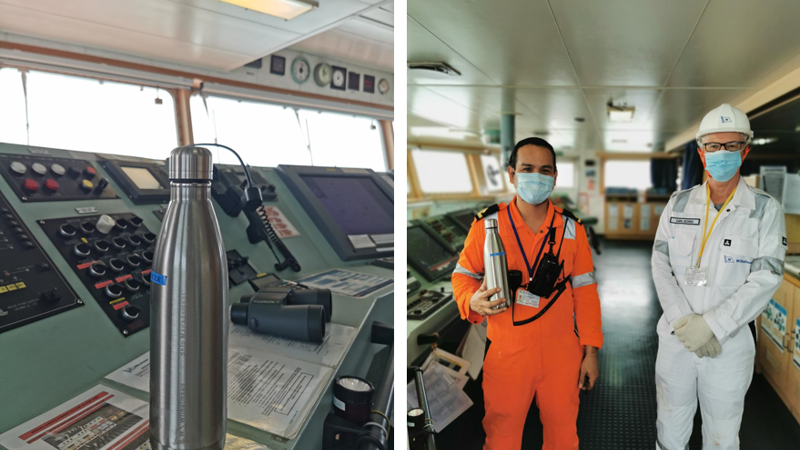From Plastic to Steel: Consciousness is a Matter of Substance
Wilhelmsen insights
|
Wilhelmsen Ship Management
Choosing the reduce plastics onboard
The composition of plastic makes it one of the greatest environmental and marine life threat. The International Maritime Organisation (IMO)warns that plastic litter presents a huge problem to our oceans and if left uncurbed, there will be more plastics than fish by 2050.
Our shipping industry abides to MARPOL Annex 5- Garbage from Ships that streamlines the waste and garbage management onboard marine vessels. It is safe to say that there are existing guidelines in place for proper handling of waste products for vessels to prevent marine pollution.
However, following guidelines is not enough to create sustainable seas. It needs advocacy on board and we can benefit by reducing the consumption of single-use plastic water bottles.
Changing mindsets and breaking habits
We need to instil the mindset that water from dispensers are safe and drinkable.
Seafarers come from all over the world and in some countries safe drinking water comes in plastic bottles. We need them to understand that they can safely consume the water from water dispensers onboard.
Additionally, recycling was promoted as the ideal way to handle waste and control pollution. While that is true, it is not the only solution. Reducing will always be the better option when it comes to waste. The lesser plastics we use, the less waste we produce, the lesser need for us to burn energy for recycling.
Myth: Everything separated into recycling bins are 100% recyclable
Between 1980-2015 approximately 6300 Mt of plastic waste had been generated; around 9% of which had been recycled (Source: Geyer et al.(2017) published in Production, use, and fate of all plastics ever made).
We need to break free from believing that as long as we dispose our plastics in the correct recycling bin, they will be 100% recycled. Plastic water bottles can only be recycled two to three times until the polymer chain grows too short to be recycled. During recycling, additional virgin material is needed with upgrade its quality.
The ideal alternative to solve this problem is by switching to water dispensers onboard.
Every effort makes a difference
Our managed vessels have varying degrees of water dispenser adoption.
Drawing from available data, we reached the average figures below:

Our LNG/LPG Group has committed to a yearly reduction of plastic waste for the gas fleet in the Environment Programme launched this year. One of the measures undertaken to contribute to this target is to promote drinking from water dispensers onboard.
In our managed vessels are well-maintained water dispensers with water source and tanks constantly checked for safe consumption.

Visuals are displayed in the form of posters and videos to encourage drinking from the water dispensers. The same campaigns were launched in our social channels to spread the awareness and garner support.

Our crew are given steel water bottles for them to refill at water dispensers. This management-driven initiative is part of our plan to reduce dependency on single-use plastic water bottles.
Collaboration and stewardship
Wilhelmsen Ship Management supports IMPA’s (International Marine Purchasing Association) initiative called IMPA SAVE.
The council, including Wilhelmsen Ship Management, represents global shipowners and maritime suppliers as adopters of sustainable business practices aimed at conserving the world’s oceans through the maritime supply chain. The first milestone of IMPA SAVE is to reach zero plastic drinking water bottles by 2025 – a resolution branched from our roundtable discussions in 2019.
We hope more shipowners and managers will join us and pledge the commitment to the reduction of plastic water bottles in all vessels.